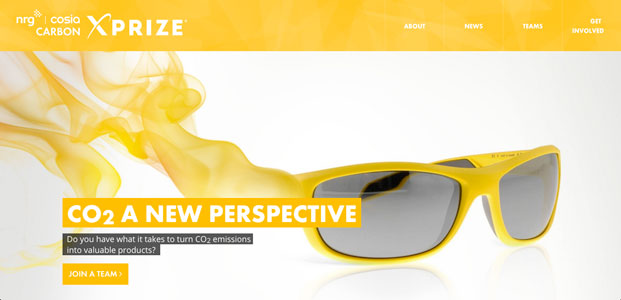On September 29th, 2015 XPRIZE announced their next challenge; the Carbon XPRIZE.The Carbon XPRIZE, co-sponsored by NRG and COSIA, is a $20 million prize for the team that successfully utilizes the CO2 output from either a coal power plant or natural gas facility. XPRIZE was established in 1995 and has become the leading organization in incentivizing competitions that solve global challenges. They have 5 active challenges, ranging from education and literacy to moon landings and CO2 conversion. Past prizes include: the Ansari XPRIZE for suborbital private space travel, awarded to Mojave Aerospace Ventures for their SpaceShipOne; the Wendy Schmidt Ocean Health XPRIZE for monitoring the impact of CO2 on our oceans, awarded to Sunburst Sensors, ANB Sensors, and Team Durafet; the Northrop Grumman Lunar Landing XPRIZE for repeated rocket travel to the moon, awarded to Masten Space Systems; and the Progressive Automotive XPRIZE for super fuel efficient vehicles, awarded to Edison2.
The unique process for vetting and building each XPRIZE starts with a few basic criteria, my favorite being:
“Audacious but Achievable”
“Achievable” is key. The organization that jump-started commercial space flight has basically said we think this is something that can be done, it is hard, but it can be done.
Breaking Energy’s piece “Why We Need to Get from Carbon Capture and Storage (CCS) to Carbon Capture and Utilization (CCU)” highlights the crux of the problem in CO2 mitigation with a quote from Duncan Kenyon (Pembina Institute)
“…if carbon capture and utilization technologies are to be financially feasible and environmentally significant, they must be able to use significant amounts of CO2 in a timely fashion.”
Dunkin Kenyon’s piece is worth a read on its own, you can find it here.
Incentivizing carbon capture and utilization has already proven to yield some innovative and marketable products. The Alberta-based ClimateChange and Emissions Management Corporation has established a $35 million prize that is already showcasing 24 exciting products derived from CO2. A June 2014 piece by Ben Schiller at Fast Company highlights some of these “good ideas” in “5 Products We Can Make From Carbon So It Doesn’t Go Into The Atmosphere”. Projects range from synthesizing graphene to wastewater treatment & desalinization, including a look at fuels and fertilizers. Check out CCEMC’s 24 round one finalist and prepare to be inspired.
Totals for Round 1 of CCEMC’s Carbon Uses Project - source: CCEMC’s website 20151026
Moving to the large scale CO2 capture & utilization, as required for coupling to a coal burning power plant or a natural gas facility via the Carbon XPRIZE, seems like the next logical step. We know we will not be able to kick the fossil fuel habit over night. Fossil fuels, and the CO2 emissions that go with them, will be with us for some time. The announcement of the Carbon XPRIZE is encouraging us, as an innovative community, to bring out those old and dusty “crazy” ideas to find ways to capture and convert CO2 into a useful commodity. Roman Kilisk, author of the above Breaking Energy piece, summarizes the problem quite well
“…there has to be a commercial driver for carbon capture projects – meaning, ‘carbon’ has to be regarded as a valuable commodity – ideally with a market price – in order for it to be first captured and then stored and not just regarded as a part of ‘waste emissions’.”
SOFI is excited about the idea of making one generation’s “trash” the next generation’s “treasure” and encourage you to look into the Carbon XPRIZE, create a team, and help change the way we look at CO2.


I am already making methanol and gasoline from CO2 captured from the air, this is the clean way to capture CO2 from a chimney, one just captures an equal tonnage to that emitted , and that has already been added to the atmosphere. Once you have captured your CO2, you can sequester it , or make fuel which is carbon neutral and allowa the Earth to recover., or you can make plastic which when buried becomes a totally secure sequester.or you can make fertilizer for food crops, ( the presentl method is ro use fossil fuel to make fertilizer)
,